6. The Crimson Kimono (1959)
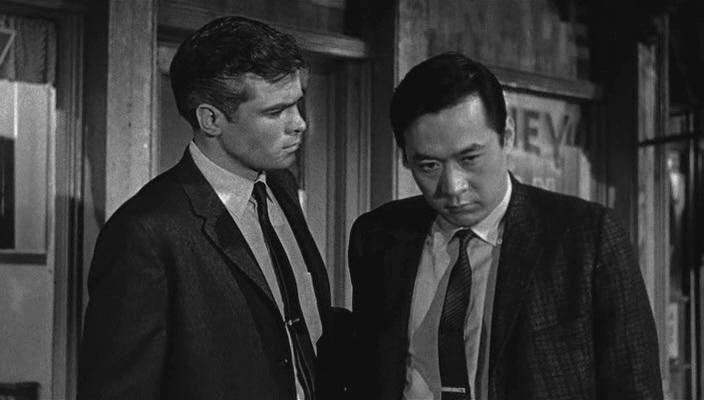
The Crimson Kimono opens on a wild note as a stripper (Gloria Pall) finishes her act and goes tearing through the neon-blazoned streets of Los Angeles pursued and shot down by a concealed gunman – like something out of the just emerging French New Wave. While the film then transitions into the procedural world of buddy detectives Kojaku (James Shigeta) and Bancroft (Glenn Corbett) it unfolds through the sub-bohemian nooks and crannies of Little Tokyo’s night clubs and studios – including the home of drunk abstract expressionist Mac (Anna Lee) – in which the detectives are at home, as well as, in a more formal reverent turn its icons of Japanese-American culture, temples and martial arts gyms.
In their pursuit of the killer of the dancer known as Sugar Torch (Pall) they find she died with a Japanese themed act in the making, working with a karate “brick-smasher” (George Yoshinaga) and the UCLA painter Christine Downes (Victoria Shaw), as the two of them, one after the other, oblivious to eachother, fall in love with her. While the film continues to develop within the space of the detective procedural, following up the lead of a suspicious Mr. Hansel (Neyle Morrow), but becomes a romantic drama at its core, Christine’s choice between the two men and the two men’s competition with one another, with the former film hanging around as if just enough to channel the men’s emotions into violent outbursts of action a crime in the martial arts world so conveniently provides.
Though the film is also something more beneath the romantic drama, a film about racial attitudes towards Japanese-Americans in the fifties, and of interracial romance in a time of anti-miscegenation laws making it many places not just taboo but illegal. In his love for Christine Kojaku deals not only with fears of her not accepting him as a Japanese but also in his eventual confrontation with Bancroft a perception of racial hatred in even his best friend.
7. Shock Corridor (1963)
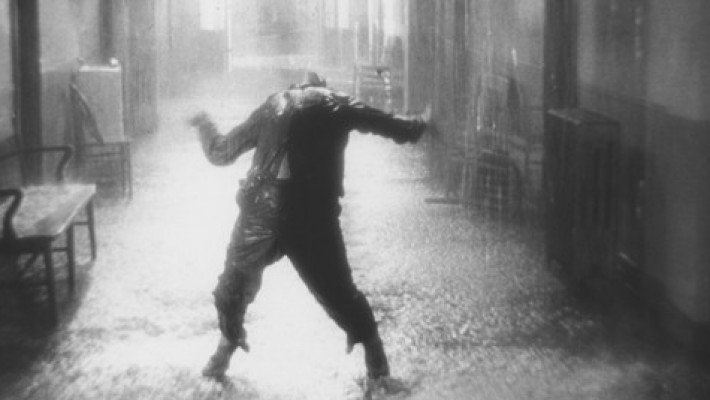
Quintessential Fuller — originally written for Fritz Lang under the name Straitjacket, Shock Corridor follows investigative journalist Johnny Barret’s (Peter Breck) undercover infiltration of a psych ward in order to bring justice to the unsolved murder of a patient and win himself a Pulitizer. Driven by mad ambition Barret has no regard for his own well being and trains with psychologist friend Dr. Fong (Philip Ahn) – a wartime psychological warfare operative – to impersonate a schizophrenic incestuously obsessed with his sister, who is, for the sake of the mission played by his reluctant accomplice girlfriend Cathy (Constance Towers).
Once behind the walls – admitted for reportedly assaulting Cathy – Barrett has three witnesses to Sloan’s murder he must question, each crazier than the last, Stuart (James Best) a North Korean POW survivor who believes he is Confederate General J. E. B. Stuart who spends his days in civil war reenactment, Trent (Hari Rhodes), a black student in a first wave integrated university who has internalized the racism experienced to the point of becoming a racist KKK man himself, marching through the ward terrorizing black patients and preaching white supremacy, and a Dr. Boden (Gene Evans), a Nobel prize winning physicist whose mind regressed to the mentality of a six year old child following his work on the atomic bombs.
As Barrett learns to speak the language of insanity and cozy himself up to these witnesses he begins to lose himself as well, develops an antagonism with the guards, and especially the sadistic Wilkes (Chuck Roberson) who fry his brains in shock therapy, and develops a paranoid obsession with Cathy cheating on or leaving him that finally sees him crack, believing she really is his sister.
Shock Corridor epitomizes Fuller’s artistic and moralistic principles – a kind of half-comic expose of a grotesquely corrupt institution – standing in its way for all institutions – and its freak show of crazies, outcasts and victims, from the gargantuan opera singing Pagliacci (Larry Tucker) to the ward of nymphomaniacs, each broken in their own way by a society propagating hatred, madness, conformity, and perversion.
8. The Naked Kiss (1964)
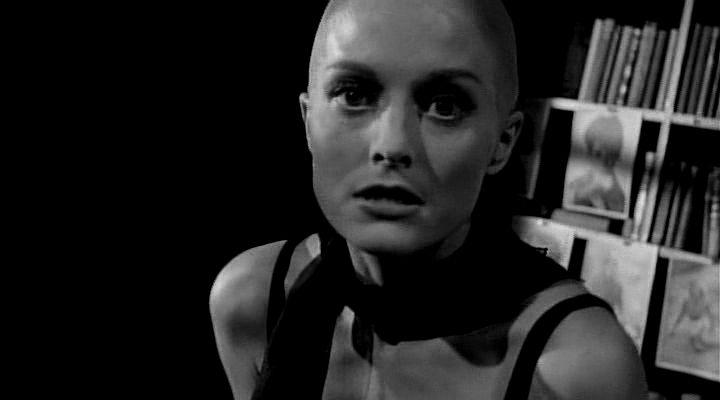
Like Samuel Fuller’s Blue Velvet, The Naked Kiss is a bleary eyed dream of suburban American purity and the unspeakable evil festering beneath. Opening on the action of our bald-headed prostitute protagonist (Constance Towers) battering her drunken pimp with a handbag to the mad ejaculations of a free jazz score – from the POV of the pimp and so battering the audience – the film takes off in an underworld frenzy only to see Kelly take what her pimp owes her and make off for a new and quiet life.
Skipping ahead some time we meet Kelly hair-regrown and settling down in a picturesque middle-American suburban nowhere, kids jumping rope, sun and smiles shining. Taking a boarding room and posing as a travelling champagne saleswoman we quickly realize Kelly is still working as a prostitute but as her own boss now – until she’s picked up by a cop in plainclothes, Captain Griff (Anthony Eisley), who tells her she’s come to a clean town and won’t be let to ply her trade there, and to head across the river to the brothel of Candy (Virginia Gray) which in name of her independence Kelly stubbornly refutes, trying to go straight getting a job as a nurse at a local hospital for disabled children, a virtuous job in matching the virtuous image of the town she sees – though not escaping Griff’s suspicion and harassment.
As she integrates into the social world of the town, Kelly falls in love and begins a relationship with J.L. Grant (Michael Dante), the children’s hospital’s wealthy benefactor with whom she shares a taste for the culture, for French poetry and classical music. Set to marry, finally reformed, she thinks, and at last accepted, it seems as if things are too good to be true – and in standard form turn out to be, as the evil of Grant’s private life is finally revealed to her.
The look of the thing thanks to Stanley Cortez (Night of the Hunter, The Magnificent Ambersons, and Shock Corridor) really elevates it to something surreal and from the very first Constance Towers carries the film between a hard edge of experience and a kind of manic naivete, falling for the dream.
9. The Big Red One (1980)
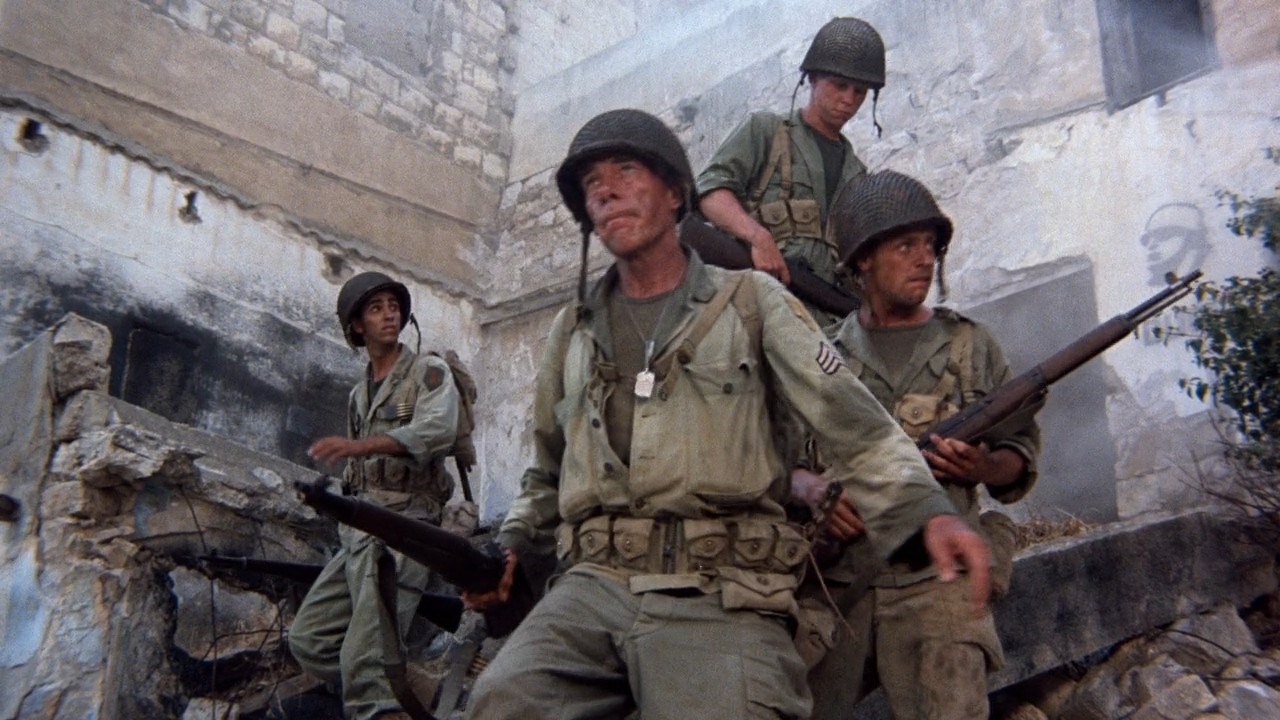
“Pro or anti, what the hell difference does it make to the guy who gets his ass shot off?”
The Big Red One saw Fuller’s return to filmmaking after a decade of near absence in the 70’s and a return to the war film in the most personal way yet, telling a story torn straight from the pages of Fuller’s war diaries and recounting his experience in the 1st Infantry Division – known as the Big Red One – in North Africa, France, Belgium, and Czechoslovakia, including the D-day landing at Omaha Beach and the liberation of the Falkenau concentration camp.
The story is told through the freeform narration of Fuller’s direct fictionalization Zab (Robert Carradine), a cigar chomping young novelist who declares himself “the Hemingway of the Bronx” and fights alongside a foursome of misfits, including the squeamish cartoonist Griff (Mark Hamill), the street kid saxophonist Vinci (Bobby Di Cicco), and the farmboy medic (Johnson), far from any rugged soldier icon of masculinity, and under the direction of the sharp but aging Sergeant (Lee Marvin), a veteran of the first world war haunted by his killing of a German after the war was declared ended.
It’s the kind of war story only someone who was there ever could have written. It neither glorifies nor makes a grand tragedy of things – it simply is. And is with a great deal of banter of sarcastic attitude – pitch black humor at the expense of oneself, one another, nothing sacred – a detachment one would have to adopt to stay sane, and hell to stay entertained – to get through it. And in this way it tracks the Big Red One’s anecdotal encounters of the bizarre and improbably of the true and anecdotal – pictures of war no one would ever think to write – trading severed ears for cigarettes, delivering a baby inside a German tank, and watching a number of Italian farm ladies hack a nazi apart with their scythes – concentration camp visions of the true horror of the Nazi regime easily sidestepped by the mainstream war film – and pure satirical Fullerisms, like the looney bin shootout where bullets whiz by the heads of holy fools, eating nonchalantly at a banquet table while their food explodes around them, where one of the mad picks up a fallen soldier’s gun and begins firing madly (how else?) shouting I am sane! I am sane! I am one of you! I am sane!
10. White Dog (1982)
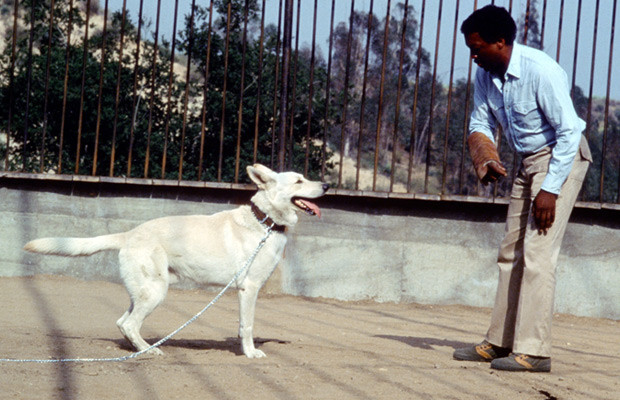
In this, the last major film of Fuller’s career, we see the auteur in his late-style creating a film for no market, a film reviled and shelved, silenced, rediscovered and beloved, broaching the most difficult of questions about race in the most blunt way possible, loosely in the form of the animal horror film, with a violent dog comparable to 1983’s popular Stephen King adaptation Cujo, but without any of that film’s enthusiasm for violence or its ironic audience distance that allows them to cheer on the attacks.
From a novel of the same name by Romain Gary (itself based on actual experiences of Gary and then actress girlfriend Jean Seberg) White Dog is about a dog driven to kill not by viral rabies, like in Cujo, but by the racist mind-virus, by a conditioned hatred of black skin. Actress Julie (Kristy McNichol) takes the dog in after hitting it one night with her car up in the Hollywood hills and bringing it to the vet, only to hear the pound will put it down if it goes three days unclaimed. She becomes close to the dog after it defends her from a burglar one night, but taking it to work sees it attack a black actress, Molly (Lynne Moody) without any provocation. Julie’s boyfriend Roland (Jameson Parker) tells her it is an attack dog, and should be put down before it attacks someone else, but stubborn Julie takes it to an animal trainer’s, where it attacks another black man, and the trainer Carruthers (Burl Ives) declares it is a ‘white dog’, a dog conditioned in the way of slavery days to seek out and kill blacks on sight.
Carruthers too suggests the dog be put down, but a black trainer Keys (Paul Winfield) believes to untrain its racist nature could strike a blow in the larger fight against racial hatred, to show their work can always be undone, to prove perhaps no one is irredeemable. So against Carruthers’ better judgement Julie allows Keys to take it upon himself to retrain the dog, though fearing he may only be able to break its conditioning at the cost of its basic sanity. But the dog escapes nights and continues hunting down and killing blacks, and Keys’ task becomes more and more dubious the longer he keeps it alive.
The film asks difficult questions of the nature of racial hatred, its rootedness in a blind rage or hatred, in a seeing in black and white (as a dog literally does), as conditioned in by family or society, and the possibility of its undoing, its cure – difficult questions, mind you, ones probably best suited to some 3-hour period drama or maybe a non-fiction book but nope! — Sam Fuller’s gonna do it his way, and do it with a goddamn dog movie!!